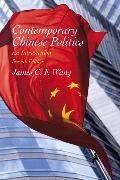Read more
List of contents
Preface.
Romanization of Chinese Names of Persons and Places.
1. Introduction: Historical and Cultural Perspectives.
2. The Origin and Rise of the Chinese Communist Movement: From Military Communism to Deng's Reforms.
3. The Erosion of Chinese Communist Ideology: Marxism-Leninism, Mao's Thought, Dengism, and the Thinking of Jiang Zemin.
4. Political Institutions of the Party-State: Structural Issues and the Policy Process.
5. Elites and the Cadre System: Leadership Style, Factionalism, Succession, and Recruitment.
6. Reform for a Creditable Socialist Legal System.
7. Provincial and Local Politics: Centralism versus Regionalism, National Minorities, and the Case of Tibet.
8. Greater China: Reversion of Hong Kong and Macao, and the Pearl River Delta Regional Development, and the Taiwan Question.
9. The Military's Role in Chinese Politics.
10. Democracy, Dissent, and the Tiananmen Mass Movement.
11. The Politics of Modernization: Rural and Urban Economic Reforms.
12. The Politics of Modernization: Education, Science and Technology, the Open Door Policy, and the Intellectuals.
Appendix A: The Constitution of the People's Republic of China (1982).
Appendix B: The Constitution of the Communist Party of China (1982).
Appendix B-1: Revision of Some Articles of the Constitution of the Communist Party of China (1987).
Appendix B-2: Amendment to the CCP Constitution (September 1997).
Index.
Summary
For junior/graduate-level courses in Chinese Politics, Asian Politics, and Comparative Politics. This comprehensive, accurate, and up-to-date text provides information and analysis for a complete examination of contemporary China and its political and economic developments.

